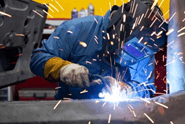Market Data

December 22, 2020
December PMA Report: No Change in Activity
Written by Sandy Williams
Metalforming firms are expecting business conditions and order activity to remain unchanged during the next three months, said the Precision Metalforming Association in its December 2020 Business Conditions Report.
“Metalforming manufacturers are showing resiliency during the COVID-19 pandemic, but finding workers continues to be a challenge despite the high unemployment rate,” said PMA President David Klotz. “In addition, members are experiencing supply chain problems that are causing low steel inventories as supply tightens.”
Average daily shipping levels declined in December, reported PMA firms. Fewer companies had a portion of their workforce on short time or layoff in December at 14 percent compared to 15 percent last month.
The Precision Metalforming Association (PMA) Business Conditions Report is prepared monthly from a sampling of 111 U.S. and Canadian metalforming companies and is considered an economic indicator for manufacturing.








